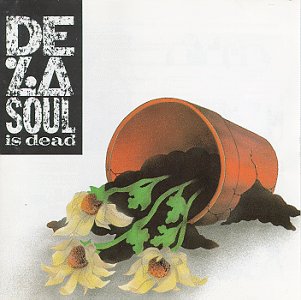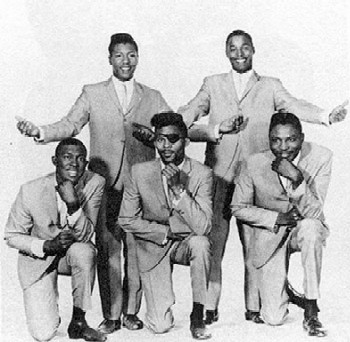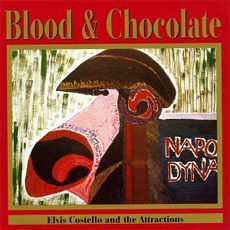Don’t do drugs.
The Great 48 has submitted the following Critical Upgrade. I’ve never heard this album, only knowing their popular debut, which a friend burned me years ago and which I enjoy but wish was less silly. The Great One’s description of the band’s overlooked follow up makes me want to check it out. Let us know what you think and whether the Critical Upgrade filing is in order.


De La Soul, “My Brother’s a Basehead”
First, some set-up is in order: De La Soul was formed in 1987 by Kelvin Mercer (Posdnuos), David Jolicoeur (Dove), and Vincent Mason (Mase), three teenagers from Amityville, Long Island. That last part is important: De La Soul were the first important New York rap group not from the five boroughs, but from a middle-class suburb. Under the guidance of Paul Hudson (Prince Paul), a slightly older hip-hop producer who was also a member of the mid-80s group Stetsasonic, De La Soul got a deal with Tommy Boy Records and released their first single, “Potholes In My Lawn”, in 1988. This song, the chorus of which featured a jews harp and a yodeler, sounded basically like nothing that had ever come before in hip-hop, and when their debut album, Three Feet High and Rising, came out in the spring of 1989, De La Soul were immediately the hottest thing on the scene.
Some historical placement: although Public Enemy, the Beastie Boys, and some other acts were already expanding the sonic parameters of hip-hop, most hip-hop singles in ’88 and ’89 were still fairly simple, bare-bones affairs along the lines of Run-DMC’s hits. Three Feet High and Rising was worlds apart from that: the songs were still largely sample-based, but although Mase was nominally the trio’s DJ, their sound was created in-studio by Prince Paul and the group out of loops, samples, sequencers, live instruments and found-sound tapes, which made their music far more complex than anything else that was going on at the time. Listen to Three Feet High and Rising today, and unlike just about any other hip-hop record from 1989, it doesn’t sound dated. And it attracted a different sort of white audience than any previous hip-hop album: I can state for myself that although I was mildly interested in hip-hop and buying singles and occasional albums starting with the early run of classic Grandmaster Flash sides on Sugar Hill (other than Blondie’s “Rapture,” my first hip-hop purchase was Flash’s “It’s Nasty,” a great 1982 single based on the riff from Tom Tom Club’s “Genius of Love”), there was always a vaguely sociological angle, if you get what I’m saying. I barely had any personal connection to Run-DMC’s lyrics, much less Public Enemy.
But once you get past the proliferation of in-jokes, goofiness, and random nonsense on Three Feet High and Rising, the songs are about television, junk food, being slightly scared of girls even when you’re getting off with them (“Jenifa Taught Me”), moral equivocation on the topic of drugs (“Say No Go”), and personal identity versus conformity (“Me Myself and I”), topics that any suburban teenager of any race could get behind. Plus there were the samples. Along with the usual James Brown and George Clinton samples (that last song is built on Funkadelic’s “Not Just Knee Deep”), there were samples from Hall and Oates (“Say No Go”), the Turtles (“Transmitting Live From Mars”), Steely Dan (“Eye Know”), and of course the Johnny Cash sample at the end of “The Magic Number” that gave the album its name. This was music that a teenaged white boy from the ‘burbs recognized.
Continue reading »
Greetings, fellow seekers —
It’s been too long. My contemplative journey through the bins and baskets of our Capital’s thrift stores has taken me to places unseen, unearthing treasures that have left even my vinyl guru, E. Pluribus Gergley, scratching his head in wonderment. In truth, my recent aimless wanderings have resulted in far more interesting music than I could reasonably post in one collection; hence, I am dividing the lot, in no particular order of style or quality, in batches of five songs apiece. I hope you enjoy them. Please remember, as always, that the value of the Thrifty Music experience has less to do with obscurity, or even quality, than you might think. The Thrifty Music experience is meant to open our eyes to new sounds, discovered at random, in the garbage cans of our civilization.
Here, then, is this week’s collection:


“Your Little Sister”, The Marvelows
One of a number of simple pleasures found in a 25-cent box at the local Goodwill, this number has a lot going for it: a jaunty groove, a sly lyric, a great studio sound (I love the hugeness of the bongo roll at the top of the tune), and that irrepressibly catchy falsetto refrain. Lovers of trivia might be interested to know that The Marvelows were the same bunch that recorded the doo-wop smash “I Do”, popularized for my generation by the J. Geils Band. Plus, their lead singer had an eye-patch!


“I Need Somebody”, ? and the Mysterians
Here’s a band that just exudes rock and roll guts. Or maybe the word I’m looking for is confidence. Or maybe naivete. Idiocy? Either way, they’ve got no reservations about taking a dorky organ riff, serving it up about 500 times, adding some very effective yelping from lead weirdo “?,” and leaving you, the listener, to figure it out. Some things I really like about this song (the follow-up to “96 Tears”): the fact that there’s no rhythmic foundation to the segues between verses. The band just hits three descending chords, then waits for the keyboard player — who was obviously in a hurry — to get back to that riff, then, boom! They come back in. I also like the major bass flub about two thirds of the way through. T.B. Player is obviously “in the zone” and doesn’t realize the band has stopped again.
Continue reading »


While listening to selected cuts from Elvis Costello & the Attractions’ Blood & Chocolate album this morning I had the following thoughts, which can be applied to broader Rock Meditations:
- What’s your most difficult rock loss to process? For me it’s Costello’s loss of bassist Bruce Thomas. His bass playing drove so many otherwise mediocre Costello tunes. For instance, “Five Gears in Reverse” is a pretty bad song if not for Thomas’ bass part.
- The echoed scream that signifies the fadeout of “Tokoyo Storm Warning” is a recorded moment that I wish Costello could retract. “Why’d he do that?” I think, every time I hear it. It almost ruins the fairly cool song. What recorded moment by an artist you love makes you think Why’d he/she do that?
- There’s a song I wrote years ago that’s never moved beyond home demo stage for various reasons, beginning with the fact that it’s probably not very good. The song means a lot to me, however, and the middle eighth is a complete ripoff of Blood & Chocolate’s “Blue Chair”. I don’t care. Have you ever ripped off a part in a song you love so directly that you just don’t care?
- Unrelated, other than my listening to “Ship of Fools” from The Doors’ Morrison Hotel earlier, What’s your favorite coda in a rock song?
I look forward to your responses.
In what is truly exciting news for members of Rock Town Hall, Sons of Champlin‘s first three albums have been released on an upcoming compilation entitled The Ariola Years. The collection features A Circle Filled With Love, Loving Is Why, and The Sons of Champlin/Goldmine.
Surely members of Rock Town Hall need no introduction to the works of this legendary San Francisco band, but it’s reported that new and longtime fans alike will be dazzled by the first-time appearance of these remastered tracks from the original tapes. Bonus outtakes and live tracks are not scheduled for this release, although Sons of Champlin founder Bill Champlin has confirmed discussions for a future release of this nature. “It’s important,” said Champlin, “that we stem the tide of bootleggers. Besides, we owe it to our fans.”
If news of this release is not enough, the Sons have announced a Fall Tour, which kicks off September 14, in Redwood City, CA!
Caution: Sappy video clip!
What’s that line from Jerry McGuire, “You had me at ‘Hello'”? What rock song’s lyrics had you at its opening couplet? Not necessarily “the best” couplet, but the “most engaging,” the couplet that makes you – and perhaps any listener – sit up and take notice. Step into the squared circle and present your couplets!

